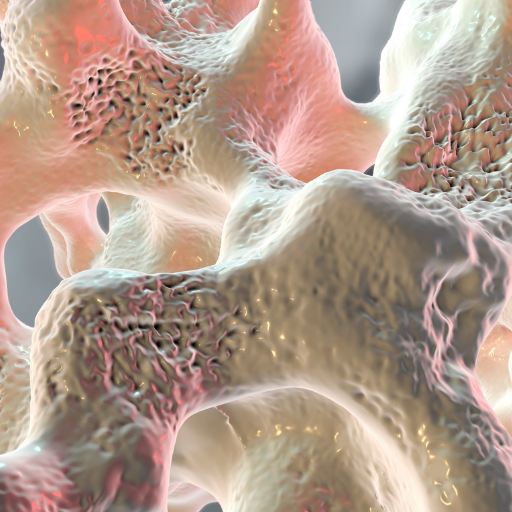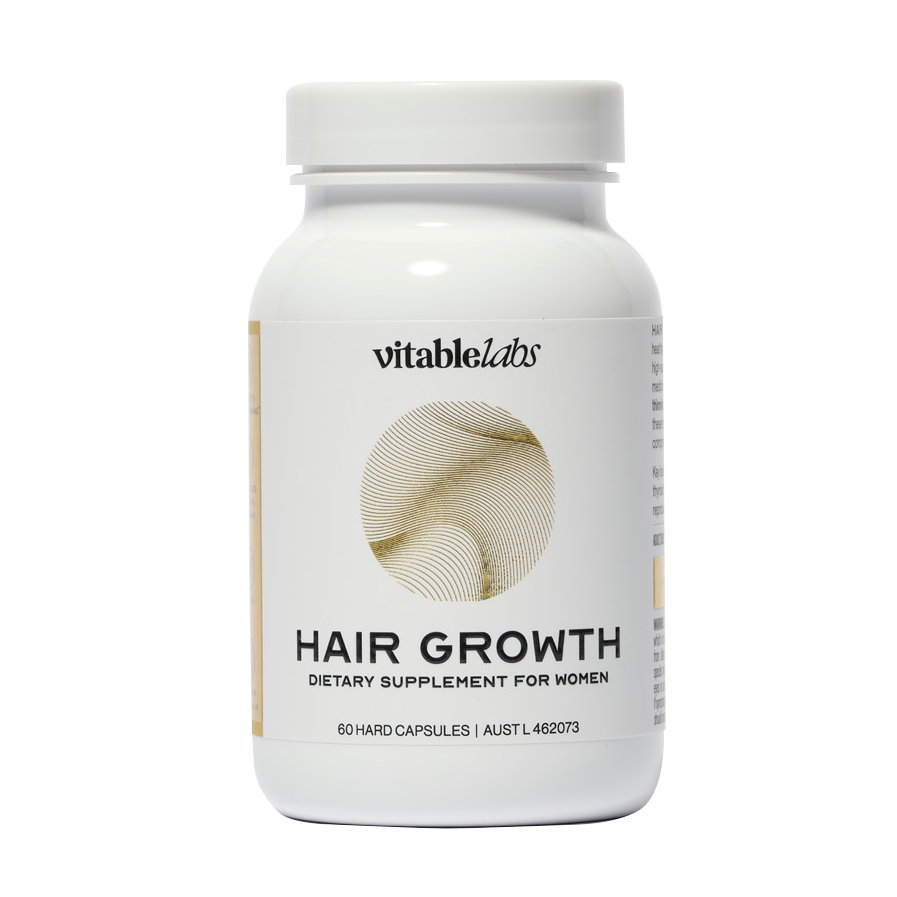From the moment of birth, the human body grows and changes. The most notable of these changes is that of size and height. Just as your skin cells continuously shed, grow, and repair, so do your bones. Calcium is very much involved in the process of growth as well as strength. It also has many other functions in the body and is a beneficial substance that contributes to our health.
What is calcium?
Calcium as a substance is a mineral that is the most abundant above all others in the human body. Much of it - about 98% (2) - is stored in the bones and teeth, which is what increases the hardness of these structures. Bones, particularly, are the repository where calcium is stored or taken from, in order to keep calcium levels stable (2).
Calcium in the body helps send signals from the brain (the body's command center) to various parts of the body. Because calcium is present in the circulatory system (2), it also helps blood vessels move blood within the body as well as in releasing hormones (1). It is also needed in every stage of life.
Skeletal tissue continues to grow in babies and young children, while in pre-teens and teenagers, it aids their growth spurt. At this stage, peak bone mass accumulates. The more bone mass an adolescent has, the less likely they are to develop osteoporosis later in life (4). Peak bone mass is defined as the greatest amount of bone that can be attained (3). This suggests that calcium supports bone mass and bone strength. The elderly especially need calcium because as one ages, calcium – and therefore bone mass – is lost. Even a diet high in calcium cannot reverse age-related bone loss, but it can delay it (2).
Why is calcium important?
As mentioned earlier, calcium is also essential for various processes in the body aside from growth and strength. It is vital not just for healthy bones, but also for healthy teeth and gums, working muscles and nerves, and for the proper development of a growing foetus as well as the mother carrying it (3).
Calcium is essential for the development of a child right from the very beginning, inside a mother's womb. This mineral aids in prenatal development by protecting the mother from life-threatening conditions related to pregnancy and birth, while also reducing the risk of less than favorable conditions related to the child's birth (4).
Incidentally, Calcium is stored not just in the bones but also in the teeth. Dental and periodontal health is a major factor in a person's nutrition, aside from diet and other factors. Furthermore, osteoporosis can also happen in the bones of the mouth.
When the body moves, it is the skeleton and the muscles at work. On a cellular level, calcium plays a role in performing these functions. Calcium also aids the nerve impulses as it travels down the nervous system's various components (5).
Calcium for healthy bones
The bone is made up of the protein collagen and it is a living and growing tissue. Collagen serves as a soft base, while calcium phosphate strengthens and hardens the bone (9). Because it is a living organ, it is constantly being regenerated. Old bone is resorbed and new bone is formed (11).
Bones shape the body, support and protect certain organs, and store minerals. Even the soft bone marrow is important, as it is where blood cells are formed (10).
Calcium supports bone health and supports bone density. Bone density is the amount of minerals in bone, and this measure decreases as we get older. When bone density goes down, it can result in brittle bones that may break even in the absence of a fall or injury. It is best, therefore, that your bones have a healthy amount of calcium while you are young, so that you still have a good amount of it as you get older.
Calcium is a mineral which supports bone healing and repair.
However, it must be noted that older adults possibly have conditions or health risks that can make bone health worse. Such examples are low calcium intake, low vitamin D levels, and, sometimes, hormonal signals to remove calcium from the bones to keep blood calcium levels normal (11).
Calcium for dental health
Diet and eating habits impact both a person's nutrition as well as oral health. This includes one's dental health.
Calcium allows calcified oral tissues – hard dental tissue, bony sockets, and jaw bones – to grow and remain strong. These tissues differ from mineralised tooth structures: dentin, enamel and cementum. The jaw bone can become osteoporotic, which could lead to teeth falling out (7).
Enamel, the hardest substance in the body, serves as the outer layer of the dental crown. Enamel is also more mineralised than other tooth structures. It protects the tooth from physical, thermal and chemical forces that could damage the tissue in the dental pulp, or the innermost part of the tooth (8).
It is in this way that calcium maintains dental health and supports periodontal health.
Calcium to support muscle function
This abundant substance also ensures that muscles, nerves, and other cells are working as they should (11).
Calcium is also the muscle's main regulating and signaling molecule (13). It triggers contraction by attaching to certain proteins (14).
Calcium for nerve function
Calcium is important in supporting nerve conduction, a process also known as nerve impulse transmission.
When a nerve impulse signals a muscle to contract, entryways in the cell membrane of the muscle cell open to let in calcium ions. They then bind to activator proteins, which triggers the release of calcium ions from inside the cell. In turn, calcium ions, through a complex process, give energy for the muscle to contract (15).
Where can I get calcium?
Despite the crucial role of calcium in so many bodily processes, the body cannot generate calcium on its own11 and so needs to be taken from foods that contain it.
Milk, although the most widely known food from which calcium is obtained, is not the only food source that contains it.
Sources of calcium include: dairy (e.g., milk, yogurt, cheese); fortified foods (e.g., soy, bread baked with fortified flour); greens (e.g., kale); and nuts and seeds (3).
What does calcium deficiency look like?
When calcium levels are low, the body takes what it needs from the bone, so it can be difficult to tell when a person's calcium consumption is not enough.
A diet deficient in calcium can lead to osteoporosis in later life. It affects various body systems and is connected to low bone mass, osteoporosis, numbness and tingling of fingers, convulsions, as well as abnormal heart rhythm (17).
In osteoporosis, new bone is not created at the same pace at which old bone is lost. It is characterised by back pain, height loss, stooped posture and bones that break easily.
Risk factors influence how likely a person is to develop osteoporosis and some of these cannot be helped: sex, age, race, family history of osteoporosis, and body frame size. Low or high hormone levels also affect the chances of osteoporosis: sex hormones, thyroid hormones, and those secreted by other glands such as the adrenal and parathyroid.
The chances of developing osteoporosis are also affected by eating habits and calcium intake, medications, health conditions (e.g., cancer, celiac diseases, rheumatoid arthritis), and lifestyle (e.g., lack of exercise, excessive drinking, smoking) (18).
It was mentioned earlier that osteoporosis could occur in the jaw bone, which could result in teeth falling out. Calcium may help prevent osteoporosis in later life. A certain study conducted among older adults suggested that intake of calcium and vitamin D helps tooth retention (19).
What is vitamin D and how does it work with calcium?
Vitamin D, otherwise known as calciferol, is a fat-soluble vitamin present in a few foods. Though vitamin D also comes from exposure to the sun, supplements, and food, it has to undergo two chemical processes to become activated.
This substance helps promote absorption in the intestine, particularly that of calcium. It also ensures serum calcium (or calcium in the blood) and the body's phosphate concentrations are enough to allow bone to mineralise normally (5).
Apart from helping to protect against osteoporosis, vitamin D is needed to help absorb, carry and deposit calcium in the bone supporting the teeth (7).
Learning more about Vitable's Calcium Plus
Apart from calcium, Vitable's Calcium Plus has vitamin D for better calcium absorption in the gut. It is practical and convenient especially if you have little opportunity to get out into the sun and if you live a fast-paced lifestyle.
Vegans and vegetarians may also benefit from Calcium Plus as it uses Vegan Society and Vegetarian Society-registered vitamin D3. In addition, it's gluten-free, lactose-free and non-GMO.
Try Vitable Australia's vitamin subscription box to get your daily dose of calcium. Vitable offers daily vitamin packs to give you the nutrients you need. These custom vitamin packs only contain the vitamins and minerals you specifically need. Try out our vitamin delivery in Australia to get your vitamins delivered to your home.
*Always read the label and follow directions for use. If you experience any symptoms or if symptoms persist, talk to your health professional. Vitamin and/or mineral supplements should not replace a balanced diet.
References:
- “Fact sheet for Consumers - Calcium”. National Institutes of Health. Published 17 Nov 2021 on https://ods.od.nih.gov/factsheets/Calcium-Consumer/. Accessed 18 Dec 2021.
- “Fact sheet for Health Professionals - Calcium”. National Institutes of Health. Published 17 Nov 2021 on https://ods.od.nih.gov/factsheets/Calcium-HealthProfessional/. Accessed 18 Dec 2021.
- “Calcium”. Better Health Channel. Published 15 Dec 2021 on https://www.betterhealth.vic.gov.au/health/healthyliving/calcium. Accessed 18 Dec 2021.
- “Calcium: A Nutrient in Pregnancy”. Bone Health & Osteoporosis Foundation. Published on 22 May 2017. https://www.ncbi.nlm.nih.gov/pmc/articles/PMC5561751/#:~:text=Calcium%20supplementation%20in%20pregnancy%20has,the%20leading%20cause%20of%20early. Accessed on 18 Dec. 2021.
- “3 Major Minerals That Aid in Nerve Impulses & Transmission”. https://woman.thenest.com/3-major-minerals-aid-nerve-impulses-transmission-21899.html. Accessed 18 Dec 2021.
- Rathee, M, Tamrakar AK, Shingla S. “Calcium and Oral Health: A Review”. International Journal of Scientific Research. Published Sep 2013 on https://www.researchgate.net/publication/294428206_Calcium_and_Oral_Health_A_Review. Accessed 18 Dec 2021.
- “Nutrition”. American Dental Association. Published on https://www.mouthhealthy.org/en/adults-over-60/nutrition. Accessed 18 Dec 2021.
- Lacruz, RS, Habelitz, S, Wright, JT, Paine, ML. “Dental Enamel Formation and Implications for Oral Health and Disease”. Physiological Reviews. Published 3 May 2017 on https://journals.physiology.org/doi/full/10.1152/physrev.00030.2016. Accessed 18 Dec 2021.
- “What Is Bone?”. National Institutes of Health. Published Oct 2018 on https://www.bones.nih.gov/health-info/bone/bone-health/what-is-bone. Accessed 18 Dec 2021.
- “Understanding Bones: What are bones?”. University of Rochester Medical Center. Published on https://www.urmc.rochester.edu/encyclopedia/content.aspx?ContentTypeID=85&ContentID=P00109. Accessed 18 Dec 2021.
- “Calcium and bones”. MedlinePlus. Published 30 Nov 2021 on https://medlineplus.gov/ency/article/002062.htm. Accessed 18 Dec 2021.
- Cormick, G and Belizán, JM. “Calcium Intake and Health”. Nutrients. Published 15 Jul 2019 on https://dx.doi.org/10.3390%2Fnu11071606. Accessed 18 Dec 2021.
- Berchtold, MT, Brinkmeier, M, Müntener, M. “Calcium ion in skeletal muscle: its crucial role for muscle function, plasticity, and disease”. Physiological Reviews. Published Jul 2000 on https://journals.physiology.org/doi/full/10.1152/physrev.2000.80.3.1215. Accessed 18 Dec 2021.
- Szent Györgyi, AG. “Calcium regulation of muscle contraction”. Biophysical Journal. Published Jul 1975 on https://dx.doi.org/10.1016%2FS0006-3495(75)85849-8. Accessed 18 Dec 2021.
- “Calcium”. Linus Pauling Institute - Oregon State University. Published Sep 2017 on https://lpi.oregonstate.edu/mic/minerals/calcium#cell-signaling. Accessed 18 Dec 2021.
- Kumar, A and Kaur, S. “Calcium: A Nutrient in Pregnancy”. Journal of Obstetrics and Gynecology of India. Published 22 May 2017 on https://dx.doi.org/10.1007%2Fs13224-017-1007-2. Accessed 18 Dec 2021.
- “Are There Any Telltale Signs That You're Not Getting Enough Calcium?”. Cleveland Clinic. Published 18 Feb 2019 on https://health.clevelandclinic.org/are-there-any-telltale-signs-that-youre-not-getting-enough-calcium/. Accessed 18 Dec 2021.
- “Osteoporosis”. Mayo Clinic. Published 21 Aug 2021 on https://www.mayoclinic.org/diseases-conditions/osteoporosis/symptoms-causes/syc-20351968. Accessed 18 Dec 2021.
- Krall, EA, Wehler, C, Garcia, RI, Harris, SS, Dawson-Hughes, B. “Calcium and vitamin D supplements reduce tooth loss in the elderly”. The American Journal of Medicine. Published 15 Oct 2001 on 10.1016/s0002-9343(01)00899-3. Accessed 18 Dec 2021.
- Fischer, V, Haffner-Luntzer, M, Amling, M, Ignatius, A. “Calcium and vitamin D in bone fracture healing and post-traumatic bone turnover”. European Cells & Materials. Published 22 Jun 2018 on 10.22203/eCM.v035a25. Accessed 18 Dec 2021.
- “Preeclampsia”. Mayo Clinic. Published 19 Mar 2020 on https://www.mayoclinic.org/diseases-conditions/preeclampsia/symptoms-causes/syc-20355745. Accessed 18 Dec 2021.
- Cutland, CL et. al. “Low birth weight: Case definition & guidelines for data collection, analysis, and presentation of maternal immunization safety data”. Vaccine. Published on 4 Dec 2017 on https://dx.doi.org/10.1016%2Fj.vaccine.2017.01.049. Accessed 18 Dec 2021.
- “Preterm birth”. World Health Organization. Published 19 Feb 2018 on https://www.who.int/news-room/fact-sheets/detail/preterm-birth. Accessed 18 Dec 2021.
- “Postpartum Hemorrhage”. University of Rochester Medical Center. Published on https://www.urmc.rochester.edu/encyclopedia/content.aspx?ContentTypeID=90&ContentID=P02486. Accessed 18 Dec 2021.







